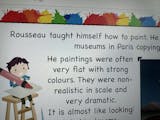
KS1 Maths Assessment
Download these handy KS1 Maths assessment sheets which provide you with a set of assessment activities covering each of the National Curriculum objectives for KS1 Maths. These fun and engaging resources include a page per objective to help you check your children's understanding of each concept through practical, oral and written tasks.
Unlock huge savings with a PlanBee Subscription
Instant access to our entire library of resources from just £6.49 a month. Find out more




















































